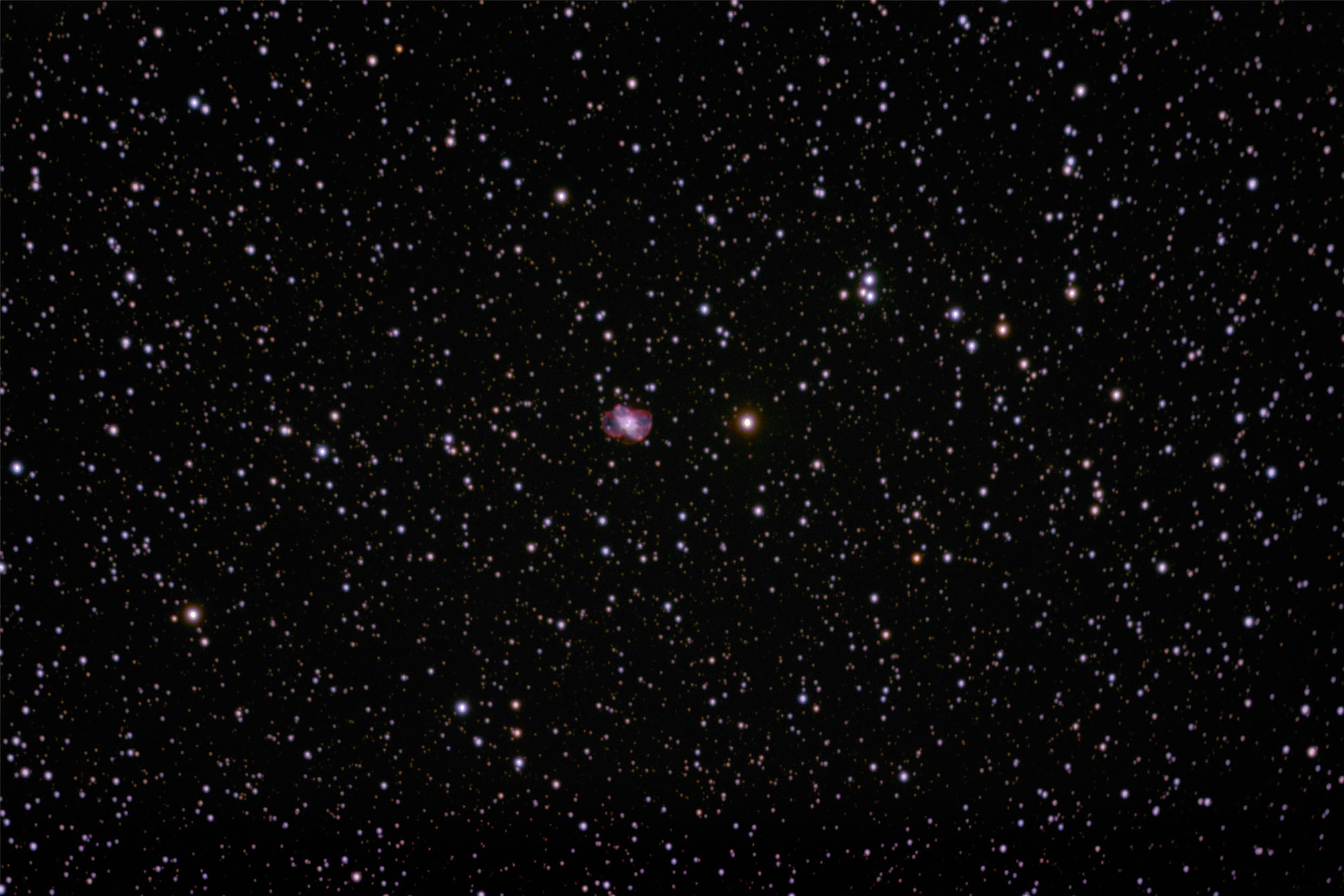| Description | Images |
Object name: NGC2440Designation(s): NGC2440, Hubble took the definitive photo of NGC 2440, a small 76" of arc planetary nebula. Their photo was taken with narrow band imaging of various elements and thus the photo's colors are false but the detail tremendous. I had to work through the earth's atmosphere to get what little I could. Seeing was lousy making for rotten stars, with deconvolution I was able to pull some detail out of this tiny planetary. The star at its center doesn't show. You do see two bright regions on either side of it. The star shines with almost all of its light being in the ultraviolet part of the spectrum. Thus it doesn't get through our ozone layer so we can't really see it from earth. It is possibly the hottest star known. The surface temperature of our sun is about 10,000 F degrees. This guy has just recently puffed off its outer layers exposing the core where the fusion that powered the star took place. That went dead when the outer layers were lost exposing the super hot core. These cool rapidly so this one was caught soon after the change. Its temperature is more like 400,000 F degrees! 40 times hotter than our sun! This is why it emits mostly ultraviolet light. It is these outer layers that glow red and blue in my shot. The Hubble image can be seen at: Related Designation(s):2MASS J07415525-1812284, 2MASS J07415540-1812340, AT20G J074155-181230, ESO 560-PN 009, IRAS 07396-1805, NGC 2440, NGC2440, NVSS J074155-181230, PMN J0741-1812, PN G234.8+02.4, VERA J0741-1812, |
